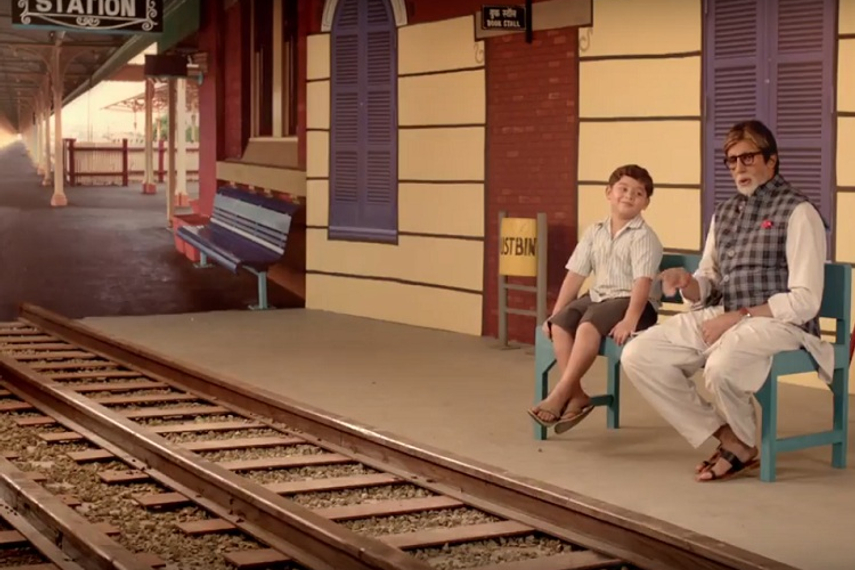
Richard Thaler’s work on behavioral economics won him the Nobel Prize for Economics in 2017. His book with Cass Sunstein, Nudge: Improving Decisions about Health, Wealth and Happiness, has had a wide impact, with some governments even setting up ‘nudge units’ in their countries.
What is Nudge in their parlance? They defined Nudge as: “Any aspect of the choice architecture that alters people’s behaviour in a predictable way, without forbidding any options or significantly changing their economic incentives.”
Why do we humans need to be nudged?
Public policy examples of ‘Nudge’ at work include automatic enrolment of employees into pension schemes in the UK and the opt-out system for organ donation in Spain. By making the optimal choice the default option for all citizens, these nudges have helped improve public participation in these programmes.
Nudges are not mandates. So, while there is encouragement, there is no compulsion to comply and people have the freedom to choose other options.
Nudges do not work for changing deep seated human behavior
Nudges sound like a panacea for all that bothers us as a society. However, it remains to be seen if nudges are enough. A nudge as an intervention can work in certain situations, but to believe that nudge is an answer to all our problems, is something that may not be true.
Therefore, it is important to have a broader behavior change approach, rather than a limiting nudge approach. The rationale is as follows:
1. A nudge is limited in practice, when broader mindset shifts are desired. Nudges are a piecemeal approach: can be useful to address specific behavior, but we often desire broader mindset and behavioral shifts.
2. It treats the individual as passive/ ignorant. We lose opportunity to achieve a more significant change, which informed and involved people may support.
3. It risks ignoring how context-dependent behavior often is: the same nudge will not necessarily work in all situations.
4. It works well for small-scale and short-term behavior changes: Does not help in situations, where participatory decision-making and engagement are required.
The power of mindset change, for sustained behavior change, goes beyond just a nudge.
Swachh Bharat Mission-Grameen (SBM-G) is a nation-wide campaign in India for the period 2013 to 2019, that aims to clean up the streets, roads and infrastructure of India's cities, towns, and rural areas. The campaign’s name translates to "Clean India Mission" in English. The objectives of Swachh Bharat for rural India (SBM-G) include eliminating open defecation through the construction of household-owned and community-owned toilets in rural India and establishing an accountable mechanism of monitoring toilet use. The programme is run by the Government of India.
As part of the SBM-G mission, the aim was to achieve an "open-defecation free" (ODF) India by 2nd October 2019 by constructing 90 million toilets in rural India, at a projected cost of INR 1.96 lakh crore (USD 30 billion).
SBM-G has attempted to change open defecation behavior at an unimaginable scale. The premise of the programme being that ending open defecation is a public good, with significant positive externalities, such as health benefits. Thaler and co-author Sunstein referred to the act of nudging the public to make better choices for the greater good as “libertarian paternalism”.
The programme uses a nudge but does not stop just there.
The nudge being used interestingly, is disgust!
One of the core challenges was the fact, that rural communities, were not aware that defecating in the open was a “public bad”. Thaler and Sunstein term this as “pluralistic ignorance”, where communities “may follow a practice or a tradition not because [they] like it, but merely because [they] think that most other people like it.” The behavior has become a part and parcel of everyday life, without anyone challenging it for centuries now.
Challenging the “status quo bias” was tough. It required many follow up with the community through repeated meetings. The one nudge which was consistently used by swachhagrahis was to use “disgust” as a tool to stop defecating in the open. SBM relies on community-based approaches to sanitation. The community comes together to appraise their community’s open defecation situation and plan the next course of action. This makes sanitation a community-level concern, rather than an obscure campaign of a distant government. Non-conformers, therefore, find their act more visible to their community. The fear of community scorn, or a desire to fit in, or both, have led many to renounce open defecation. (6)
The Ministry of Drinking Water and Sanitation used “Community Approach to Sanitation”. The thought was to nudge a community (in this case a village), to take ownership to make their village Open Defecation Free (ODF).
However, just a nudge is not enough. In the absence of scorn/ disgust, it is very likely that people would go back to their earlier behavior.
What is required, is a broader mindset change through educating about the harm that is caused due to open defecation. Unless the person believes that his behavior could have negative repercussions on his health and that of others, he may change his behavior in the short term but would revert to his earlier behavior in the absence of a nudge.
Instead, if we involve the individual and treat him as someone who can make a considered choice for the good of the society then we are likely to effect change which is for the long term.
Therefore, what is required is a more holistic change, which includes changes in the environment, but goes beyond that to address the individual’s mindset and the larger social context in which he lives.
The programme, has taken the above considerations on board and has gone beyond nudges to interventions, which have attempted to make a deep-seated mindset and behavior change. In line with the UCL model of behavioural change, the mission has taken on three key interventions:
1. Creating awareness and educating people about the negatives of open defecation. The awareness and information dissemination are being done both through mass media interventions such as the Darwaza Band TV and radio campaign, as well as via on-the-ground activation using interpersonal communication by 5,80,000 grassroots motivators called swachhagrahis.
2. Environmental restructuring - Under SBM(G), 9.16 crore toilets have been constructed till February 5, 2019. Thus, sanitation coverage in the rural areas of the country, which was 38.7 per cent on October 2, 2014, has increased to more than 98 per cent.
An interesting observation made by a Government official: “With rural sanitation coverage dramatically increasing from 39% at the start of the SBM in October 2014 to over 98% today, the challenge now is of sustaining the ODF behavior achieved over the past four years. While Thaler and Sunstein provide many examples of simple nudges to change behavior, they do not have any examples of solutions to nudge people to sustain their changed behavior over time.”
3. Incentivization and monitoring - To sustain the changed behavior the Government is providing financial incentives to communities and districts to remain ODF, setting in place institutional mechanisms like a Watch committee at a village level.
Swachh Bharat Mission-Grameen (SBM-G), a successful behavioral change programme?
The Information, Education and Communication (IEC) Footprint Study by Gates Foundation (2018) did an assessment of the reach and value of IEC activities under Swachh Bharat Mission (rural). The study was conducted by Dalberg, (supported by the Bill and Melinda Gates Foundation), estimated the scale of IEC activities within the Mission. The study found that an average person living in rural India was exposed to between 2,500 – 3,300 SBM related messages over the last five years.
Since October 2014, when the programme was launched, SBM has equipped 75 million households with toilets. At the time of its launch, fewer than 40% of households had toilets at home. Today that figure is up to over 85%.
But is creating awareness, educating people and restructuring the environment, leading to long term behavior change?
An independent survey of over 92,000 households across the country, guided by a group of international experts and representatives of UNICEF and World Bank, verified that 96% of the villages declared ODF were indeed ODF, and 77% of the households surveyed had toilets (consistent with the official estimate of 76% at the time of the survey). Of the people who had access to toilets, 93% were found to use them regularly, which is very close to an even higher estimate of 95%, revealed by a separate survey conducted by the National Sample Survey Office. Finally, 70% of the villages surveyed also had minimum litter or stagnant water.
Environmental Impact study by UNICEF indicates that the communication for behavior change and other on-ground activation and nudges have worked well.
Under the "Environmental impact of the Swachh Bharat Mission on Water, Soil, and Food" by UNICEF, groundwater samples were collected and studied from ODF and non-ODF villages of Odisha, Bihar and West Bengal.
The study findings indicated that there were substantial reductions in contamination of ground water in the ODF villages which may potentially be attributed to the improvement in sanitation and hygiene practices, as well as supportive systems such as regular monitoring and behavior change messaging, which have all been critical aspects of the Swachh Bharat Mission (rural).
The Bill and Melinda Gates Foundation (BMGF) commissioned an independent survey across several states of India using a stratified random sample design to compare the incidence of diarrhea and malnutrition in ODF and non-ODF villages. The BMGF survey report is appropriately cautious about attributing causality, but it found that the incidence of diarrhea was significantly less in ODF villages compared to non-ODF villages and that measures of undernutrition (stunting and wasting), were also significantly better in the ODF villages. These differences between ODF and non-ODF villages are all statistically significant.
The success of SBM-G is a case of a strong validation for the need for mindset changes to ensure sustained behavior change for the greater good of the society.











.png&h=268&w=401&q=100&v=20250320&c=1)
